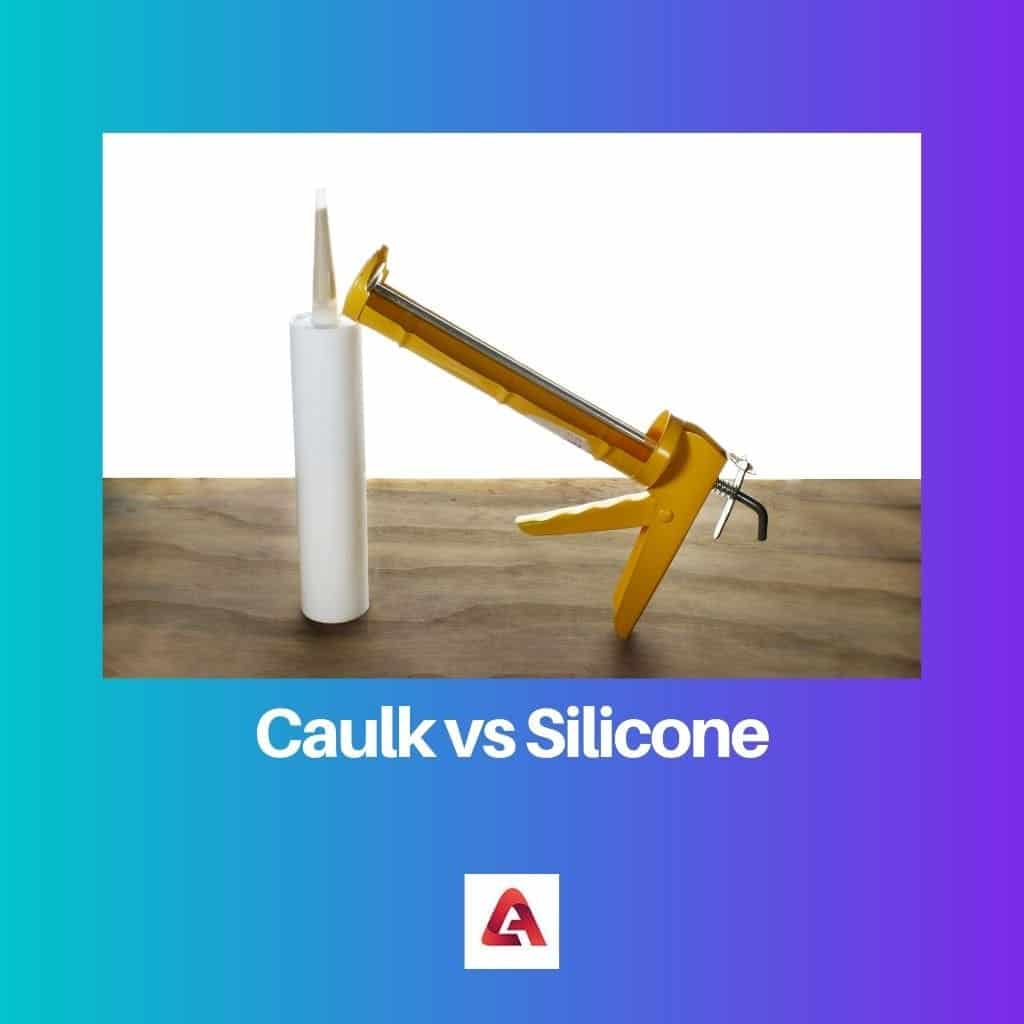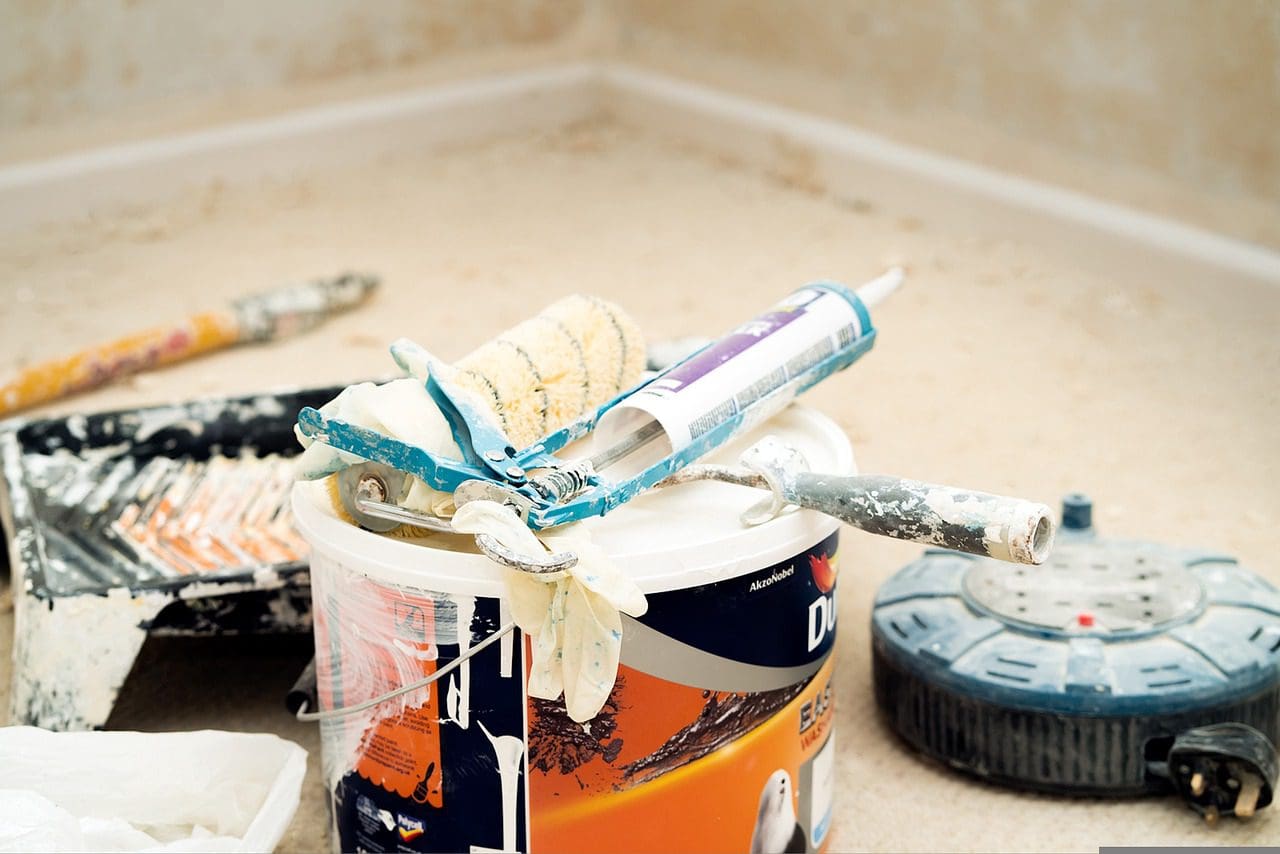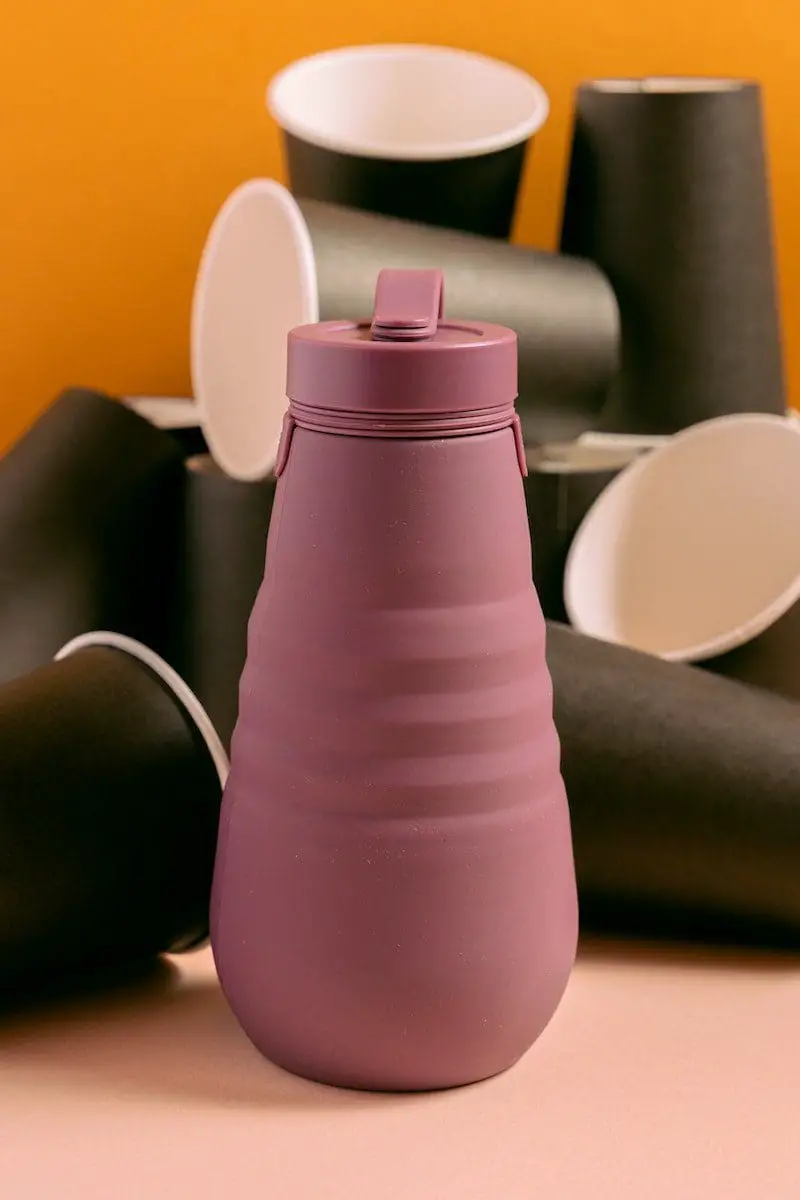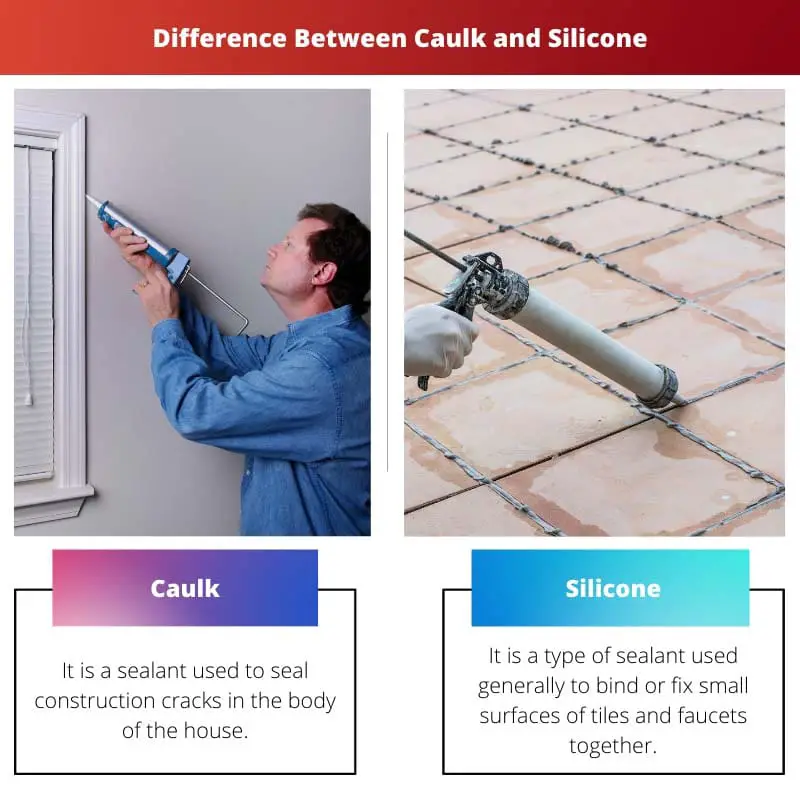Caulk is a chemical compound or a sealant used to seal up leaking joints and seams in different structures and piping.
It is mainly used to seal construction cracks in the body of the house and the corners of the bathroom walls and tiles.
Caulking is the process used to apply caulk; it is also known as a caulking sealant and is used in construction, fabrication, home repair, and various places.
Key Takeaways
- Caulk is a general term for a flexible, waterproof sealant used to fill gaps, seams, or joints in buildings or other structures. It can be made from various materials like latex, acrylic, or silicone.
- Silicone is a specific type of caulk made from synthetic polymers, known for its durability, flexibility, and resistance to temperature extremes and moisture.
- Silicone is a type of caulk, but caulk encompasses a broader range of materials used for sealing gaps, while silicone specifically refers to a durable, flexible, and moisture-resistant sealant.
Caulk vs Silicone
The difference between Caulk and Silicone is that Caulk is for significant purposes like in construction projects or in-house. In contrast, silicone mainly binds surfaces like metal, glass and plastic. Caulk is paintable, and silicone is non-paintable paint. Do not stick on these silicone sealants. Caulk is used ideally between the corners of walls, whereas Silicones are used for bath tiles and sinks.

Ideally, Caulk is used to sealing off those corners between walls of the house that are leaking and also leaking cracks between walls and ceiling.
It also has a fascinating advantage in that paint can be applied over it, and it is important for fixes and repairs in the house and various construction projects.
Caulks not just close those joints and gaps superficially but effectively prevents water leakage and provide thermal insulation. The most commonly used type of caulk is acrylic caulk or acrylic latex for general purposes.
Silicone mainly binds surfaces such as metal, glass and plastic together. Caulk paint cannot be applied to it, as it may damage the sealant and damage to crack.
Comparison Table
| Parameter of Comparison | Caulk | Silicone |
|---|---|---|
| Point of application | It is a sealant used to seal construction cracks in the body of the house. | It is a type of sealant used to bind or fix small surfaces of tiles and faucets together. |
| Degree of movement | It is less prone to movement than silicone. | It can be used in places where there is regular movement. |
| Resistant to moisture | It should not be used in rooms with higher moisture levels. | Can be used in a place with moisture. |
| Rate of drying | Caulk dries quicker than silicone and shows good resistance to weathering. | It takes time to dry. |
What is Caulk?
Caulk is a chemical compound or, in a general a sealant that is used to seal up leaking joints and seams to be used in different structures and piping.
It is mainly used to seal construction cracks in the body of the house in the corners of the bathroom walls and tiles.
Caulking is a process used to apply caulk; it is also known as a caulking sealant and is used in construction, fabrication, home repair, and various places.
Its primary purpose is to seal air leaks through cracks, gaps, or joints less than 1 inch wide. It is essential in houses as it dries quicker than silicone and shows resistance towards withering.
Highly resistant to weather yet still should not be used in a place with moisture. It is something like a sealant paint that can be applied over, yet it stays.

What is Silicone?
Silicone is a sealant used to fix or bind surfaces such as metal, glass and plastic. Mild sealant than caulk can only be used to fix or bind small surfaces, that are tiles, faucets and sinks.
It is also a very important and commonly used sealant in houses as it is a quick and easy solution to many problems of leaks in houses.
It has a limitation as paint cannot be applied if you try to do so, you will see that paint is not sticking to this sealant. It has strong binding properties that can be applied to almost any surface.
It is prone to movement and can be applied to places where there is regular movement. Silicone is very effective at times and strong in its applied place and yet easy to use and apply.

Main Differences Between Caulk and Silicone
- Caulk is used to seal off those corners between walls of the house that are leaking and also leaking cracks between walls and ceiling, whereas Silicone is used to fix and bind small surfaces like tiles and faucets together.
- Caulks close those joints and gaps superficially and effectively prevent water leakage and provide thermal insulation, whereas Silicone can close those junctions between bath tiles, sinks and faucets.
- There is also a significant difference between them in that paint can be applied over Caulks, which is very helpful after its use; the place can be painted over, while Silicone is not the kind of sealant that can be painted over. You choose the colour of the sealant wisely and accordingly.
- Caulk dries quicker than Silicone.
- Silicone can be applied in a place with moisture; it is not advisable in the case of caulk.




